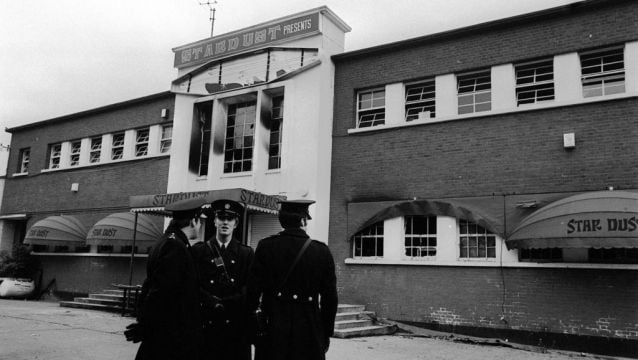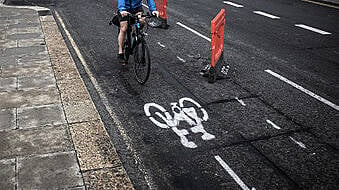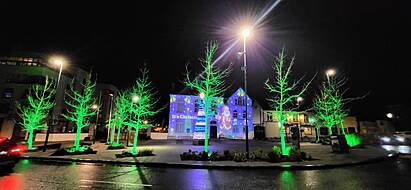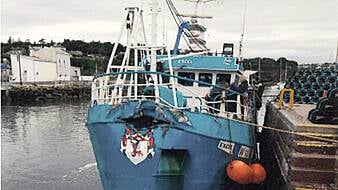The company that produced the carpet tiles used on the walls of the Stardust nightclub did not recommend they be used on walls and sold them off as a “job lot” because they were being discontinued, an inquest has heard.
Graham Whitehead, the Company Secretary for the UK based Illingsworth and Company Limited, who supplied the Stateroom tiles used on the walls of the Stardust nightclub, told the 1981 Tribunal of Inquiry before Mr Justice Ronan Keane that the company had never advertised the tiles for use on walls.
“We could not stop it being done but we have not recommended it,” he said.
Extracts of Mr Whitehead’s evidence to the tribunal were read into the record on Tuesday at Dublin District Coroner’s Court by Mark Tottenham BL, a member of the coroner’s legal team, as he is unavailable to give evidence to the inquest.
Mr Whitehead said that this particular tile, the Stateroom tile, was coming to the end of its life and the company was selling it off as there was another tile on the market to take its place. He told the tribunal that this was reflected in the price.
The tribunal heard the original price of the tile was one pound 28p, but it was sold off at 75p per tile.
The inquest has already heard that, during the 1981 inquiry, evidence was given that the carpet tiles were the most substantial contributor to the spread of the fire. It heard that a surface spread of flame test was carried out and these tiles were found to be of Class 4 rating, not Class 1 as required.
Evidence
The jury has also heard evidence that in his statement, Declan Conway, a sales representative for the company that provided the carpet tiles for the Stardust, said that he spoke to Stardust manager Eamon Butterly, who requested that Mr Conway obtain a fire certificate from the manufacturer of the tiles. Mr Conway said he was able to get the certificate that met the British standard specification.
In his evidence to the tribunal, Mr Whitehead said the company would never issue a fire certificate as “we are not an appropriate body to issue one”.
The company secretary said the document sent to Mr Conway was not a fire certificate but was “for information”. He confirmed to counsel at the inquiry that his company did not know for what purpose it was to be used when it was sent.
Mr Whitehead said he was Company Secretary and Financial Controller for Illingsworth Ltd, based in Bradford, and had worked at the company for seven years. He confirmed that the company had supplied several orders of tiles to Bernard McLoughlin Ltd, an agent working for them Ireland, who had a salesman called Declan Conway working for him.
He confirmed that an order for carpet tiles known as Stateroom tiles was placed in January or February 1978.
He said the order was initially passed through credit control for processing on January 24th, 1978.
He said he had traced a letter addressed to Mr Conway dated 26th January which referred to the results of a flammability test the salesman had recently requested.
Mr Whitehead said the document enclosed referenced flammability on carpet tiles laid on floors and came from their laboratory.
He said this was a standard document circulated amongst the company’s customers upon request.
Asked what the function of the document was, Mr Whitehead said: “This is to help architects to establish fire worthiness of carpet tiles”.
Mr Whitehead went on to tell the inquiry that he had never been in the Stardust ballroom and said it was “completely incorrect” that he had attended the opening night of the club.
In his testimony, the company secretary also said tiles had been displayed on the walls of one of their showrooms but this was only for show purposes.
He said the company did not produce carpet tiles for use on walls.
The Stateroom tiles supplied were normal, domestic, tufted carpet tile, he added.
Asked to express an opinion as to whether the tiles would be suitable for use on the wall or not, Mr Whitehead said he had asked his company’s technical department about this, and they had said that “under no circumstances would we recommend these tiles for wall covering”.
Mr Whitehead also told the tribunal that this particular tile “had reached the end of its life” and the company was “jobbing it off”. They had another tile on the market to take its place, he said.
Asked whether the fact that the company was selling these tiles off was reflected in the price, Mr Whitehead confirmed that it was.
In response to questioning, Mr Whitehead said he was not aware of any other premises where carpet tile was used as a wall covering.
He confirmed the first order for the Stateroom tiles passed through credit control on January 24th, 1978 and this was for a total of 2,899 tiles.
Mr Whitehead confirmed he had read a transcript of previous evidence where it was suggested that he knew carpet tiles were going on the walls of the Stardust. “This is perfectly untrue, I did not know,” he said.
When asked if what was supplied was “the remnants” of what was left of the Stateroom tile, Mr Whitehead said “I’d assume so”. He said the tiles went out at one pound 28p and this was subsequently reduced to 75p net.
'Job lot'
He confirmed the order was “a job lot” and he was giving it at a reduced price.
Asked if this was the biggest sale of carpet tile his company had received in Ireland Mr Whitehead said he didn’t know.
Pressed as to whether it was “far and away” the biggest single order received, the company secretary said he would “assume it would be” but would have to check. He said he did not know what the total value of the order was.
Mr Whitehead confirmed the company did not recommend that their products be used on walls. “We have never advertised, throughout my investigations and my discussions with other people, we have never recommended. We could not stop it being done but we have not recommended it.”
“In our particular rooms we have a wall in our display where it is shown, tiles on walls and on waterfalls and stands but it is publicity material,” he said.
“Most carpet people you go into a showroom they have a carpet on the wall but we would never recommend that they be put on the wall other than for display purposes. I discussed this with our technical people and they said we have never had an inquiry for them to be placed on a wall and would not recommend any large area being put on the wall.”
Prior to Mr Whitehead’s extracts being read to the inquest, Coroner Dr Myra Cullinane told the jury that the module related to the emergency response to the Stardust fire has now concluded.
Later, she addressed the jury in relation to the part-heard evidence of two previous witnesses, former Stardust doormen John Furley and Gabriel O’Neill.
She said Mr Furley had been in the process of giving evidence and answering questions to counsel when medical reports were received, and he was permanently stood down.
She told the jury he must therefore be regarded as a part-heard witness and said this was important when they come to assess the totality of the evidence heard at the inquest. She said there had been “an inability to explore” certain areas with the witness and she outlined to the jury a number of the areas that were left unexamined.
Dr Cullinane said Mr O’Neill had given some evidence to the inquest remotely and was due to return and give further evidence on a different date. She said he subsequently indicated that he was not willing to return and, in circumstances where he lives outside the jurisdiction, it is not within her jurisdiction to summonses him. She told the jury he should also be regarded as a part-heard witness.
Extracts of Mr O’Neill’s evidence to the Keane tribunal were then read to the inquest.
Mr O’Neill previously told the inquest he had been employed as a doorman for about a month at the time of the fatal fire.
In his statements to gardaí in 1981, Mr O’Neill initially said that when he heard about the fire, he went to exit five, and it was “free and easy to open it”.
However, he later said his reference to opening exit five was “not correct”. Mr O’Neill said that when he went to the door, he saw this exit was locked, and he tried and failed to open it.
He agreed with counsel at the inquiry that his statement contained “gross and deliberate lies”.
In his garda statements, Mr O’Neill also said he saw doorman Leo Doyle and Stardust manager Eamon Butterly open fire exit five from the outside.
However, when this was put to him at the tribunal he said: “I don’t remember saying they were the ones that opened exit five”.
The inquest continues on Wednesday.







